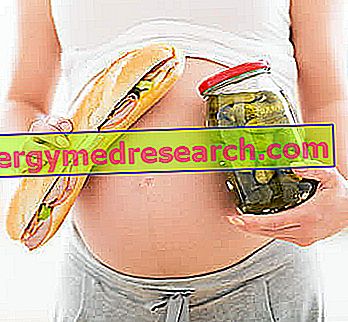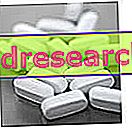When it comes to supplements, the "experts" are not lacking. In fact, there are numerous forums in the sector where a great deal is written about brands, active principles, quality standards, etc. One thing all in all useful, if it were not that often among the various "pseudo-experts" appear children who talk by party or because they are influenced by pressing marketing campaigns (like the famous bodybuilder who recommends a certain product attributing to him the merit of his muscular development). Other times the forum administrators themselves have economic interests in promoting a particular brand of supplements discrediting others. In this "trade war" we often end up coming across misleading advertisements:
products that should contain raw materials of excellent quality sold at a lower price than those of the same substances purchased by the wholesaler (a classic example is given by the Ajinomoto amino acids of pharmaceutical quality produced in Japan).

Attribution of excessive importance to aspects of little importance, such as the type of jar and the image on the label, or to subjective characteristics (such as the taste or the results obtained, when perhaps it is not the merit of the integrator itself but of the food and the method of training undertaken).
Waiting to publish the results of a research conducted in collaboration with the University of Ferrara - which towards the end of January 2010 will tell us how many proteins are actually contained in about twenty protein supplements of various brands (see results) - we report the tolerance limits compared to the nutritional contents stated on the label (source: Ministry of Health).
LIMITS OF ACCEPTABILITY OF THE NUTRITIONAL CONTENTS STATED ON THE LABEL
Total proteins (N x 6.25): for content up to 1.5% (*) for content over 1.5% | ± 0.2 units ± 15% |
| Amino Acids | ± 20% |
| Sulfur amino acids, tryptophan | ± 25% |
| Fat: for content up to 2.5% (*) for content higher than fatty acids total phospholipids single phospholipids | ± 0.5 units 2.5% ± 15% ± 25% ± 20% ± 25% |
Total carbohydrates, sugars, polyalcohols: for content up to 10% for content over 10% | ± 1 unit ± 15% |
| Minerals | ± 25% |
| Minerals in quantities less than 1 mg / 100 g | ± 50% |
| Selenium in quantities up to 40 mcg / 100 g | ± 75% |
| Vitamins | + 30% / -20% |
| Vitamin E | + 50% / -20% |
| C vitamin | + 100 / -20% |
| Vitamins in quantities less than 0.5 mg / 100 g or 250 IU / 100 g | ± 50% |
| Other elements: (beta) Carotene Carnitine Coenzyme Q 10 Choline Creatine Dietary fiber, inulin Flavonoids or anthocyanins Glutathione Nucleotides | + 30% / -20% ± 15% ± 20% ± 25% ± 15% ± 25% ± 30% ± 20% ± 25% |
In this article we focus on protein supplements, including so-called gainers, for which we have a tolerance limit of ± 15% on the protein content stated on the label. In practice, if the packaging of a product specifies a protein content of 90 grams of protein per 100, the supplement may very well contain 78 without any legal problems for its producer. Obviously, however, the difference in cost between a "protein" at 90% and one at 78% is certainly not negligible (quantifiable as 30%).
For those who base the quality of a protein supplement on taste, we remind that the addition of flavorings and sweeteners inevitably decreases the protein percentage. This is why, generally, a vanilla product contains more protein than the twin banana supplement, where the addition of flavorings is greater. Even the high solubility, obtained by spraying a solution of lecithin on the powders during the production processes ( lecithinization ), can be a sign of a lower protein content than a product that melts less well. We must not forget that the protein percentage is not the only important qualitative parameter. We know, for example, that whey proteins obtained by ion exchange, even though they have a very high protein percentage, are poor in some important components - such as lactoferrine, immunoglobulins and glycomacropeptides - that are lost or denatured during the production phases (the ion exchange process separates proteins based on their electrical charge, using some chemical substances). These fractions are instead preserved with the various filtration methods used to produce concentrated Whey protein; among these the classic microfiltration and ultrafiltration techniques stand out, which use physical filters to separate fat and lactose from the protein, without damaging it (the differences between the two are minimal and depend on the size of the filtration pores, about one micrometer large in the microfiltration and 4 times lower in ultrafiltration). As mentioned, ultrafiltered and microfiltered Whey Proteins tend to have a lower protein content (about 80%) than those with ion exchange (which reach or slightly exceed 90%). The best compromise, in this sense, is offered by Whey proteins obtained by exploiting a technique called cross-flow microfiltration, which allows protein levels to be reached close to 90% while preserving important components such as lactoferrins and macropeptides.
Next time you buy a protein supplement, then try to do it in a thoughtful way, evaluating its quality based on objective criteria. With the study we are about to undertake, we will help you to know the real nitrogen content of the best selling protein supplements, in order to provide you with an additional and important yardstick to assess its quality.



